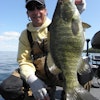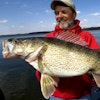Exploring the Depths: Unlocking the Full Potential of MEGA 360 Imaging and LakeMaster Mapping
Published: Updated:
There are multiple sonar technologies available for fishing like Down Imaging, 2D sonar, and 360 side imaging. This technology is used to locate bluegill beds and observe how bass behaves around these beds. Also, people catch fish by using a technique called "spot walking."
All Featured Products

Humminbird Solix 12 CHIRP G3
$2,899.99 – $3,199.99
Jump to 0:05

Humminbird Helix 12 CHIRP G4N - MEGA+ Imaging - EOL
$2,199.99 – $2,699.99
Jump to 0:08

St. Croix Mojo Bass Glass Casting Rods - EOL
$150.00 – $170.00
Jump to 0:59

Rapala DT 10 Crankbait
$8.99
Jump to 2:30

Humminbird Solix 12 CHIRP G3
$2,899.99 – $3,199.99
Jump to 3:56

Humminbird Helix 12 CHIRP G4N - MEGA+ Imaging - EOL
$2,199.99 – $2,699.99
Jump to 3:59

Humminbird Helix 10 CHIRP G4N - MEGA+ Imaging - EOL
$1,399.99 – $2,099.99
Jump to 4:07

Humminbird LakeMaster VX Digital GPS Maps
$149.99
Jump to 4:12

Bubba 6.5" Stainless Steel Pliers
$69.99
Jump to 5:17
Video Transcription
You know, we actually have a variety of different sonar today. You have down imaging, 2D sonar, side imaging in 360. The cool thing about this 360 actually for this type of fishing here actually, it's sort of interesting as we've been going along this weed edge, I can actually look, I'm looking almost 65 ft up to the each all the way around us and there's a bunch of old bluegill bedding areas in here, you know, and you can still see those depressions, it looks like little golf balls. But the interesting thing is some of these deeper water bedding areas are just monstrous. I mean, they're like twice, three times the size of this boat.
Now, those bluegills are done spawning and they're dumping back off on these developing weed edges and the bass are sort of following along. You can see what, that's what this is here. This is old bluegill beds right there, large deposits, you can obviously see there's probably hundreds of beds there.
Another one. Pretty good fish Jim, Nice, Pretty Good one. come here, come here, don't go up by jimmy's trolling motor. You won't like it there. I'm gonna come up and look at you again here. Oh gosh, that is a bummer. Pretty good fish, man. Whoa! I like spot walking, come on, man, these fish are hotter than a pistol in this. This warm water, man gets a little hooked on the side. Okay, come on. Now, you finally, you finally wearing out on me, man, I thought you were slightly bigger than that, but you're pretty good right here. Those are bass, those, those shadows and baths, nope. Oh, That's a serious one. They're out.
One thing when it comes to combing water, a few baits beat a crank bait throughout the summer months. Look at that. There's another great big one with it. Another great big one came up and tried to bite the bait out of its mouth, but it goes to show you get on these deep ledges, you know, I mean there's like big schools of fish. That was another one of comparable size just swimming with it. It actually tried to grab this D. T out of his mouth.
Look at that beautiful bass. Look at the color of her. I'm not kidding you. It's pretty, they're extraordinarily effective dives to anybody. Maybe grew up a little bit, a little bit, he grew up a little bit Next year. Class up. Let's see. We got 1234, if your count is right. And you've seen 25 of them in there on the side imaging, I caught five of them so far. I hooked five of them. You got yours Today's modern electronics. It's amazing. And once you get used to the 360 would for crank bait fishing is really sort of interesting because I'm looking around the boat and I can actually see weed density differences.
I can see our weed to rock transitions. You can actually see fish in many conditions like we pulled up here and I said, there's a school ambassador, move the cursor over hit it. We backed off and started casting there and he started catching them immediately. But it's a little bit of a different technology. Once you get your head around, you know, each one of these different types of sonar readings, whether it be two D sonar down imaging side imaging is, it's a different perspective. Everyone of them, each one of them has an individual strengths based on, you know, the fish catching processes. You can see this spot, we're on here.
This is a really a big spot actually when you are to follow the entire contour of this particular sunken hump. It's probably in excess of a mile around and that's where crank bait fishing really shines and enables you to cover a lot of water relatively quickly. And you can see the tops of these shelves in here. It's about eight ft of water. seven ft of water up on these big flats. We have some inside corners, tips of points and there's some intermittent hard bottom spots and grass up on the top of the flats. And that's where the bass are positioned on this particular spot. But the real key is, is combing water and that's where crank baits shine. It's sort of tough that warm water.
They're starting to get starting to get a little spring in their step. I got another buddy to look at that, That's cool. There you go. Come here buddy. What do you what do you got going? There you go. Here we go, doubling up. I like doubling up James, you know, I was watching he's been kicking my butt for a while, so I have to change colors. And about the third cast I caught one. I had to match up what he was doing. I got convinced I got convinced same color.





